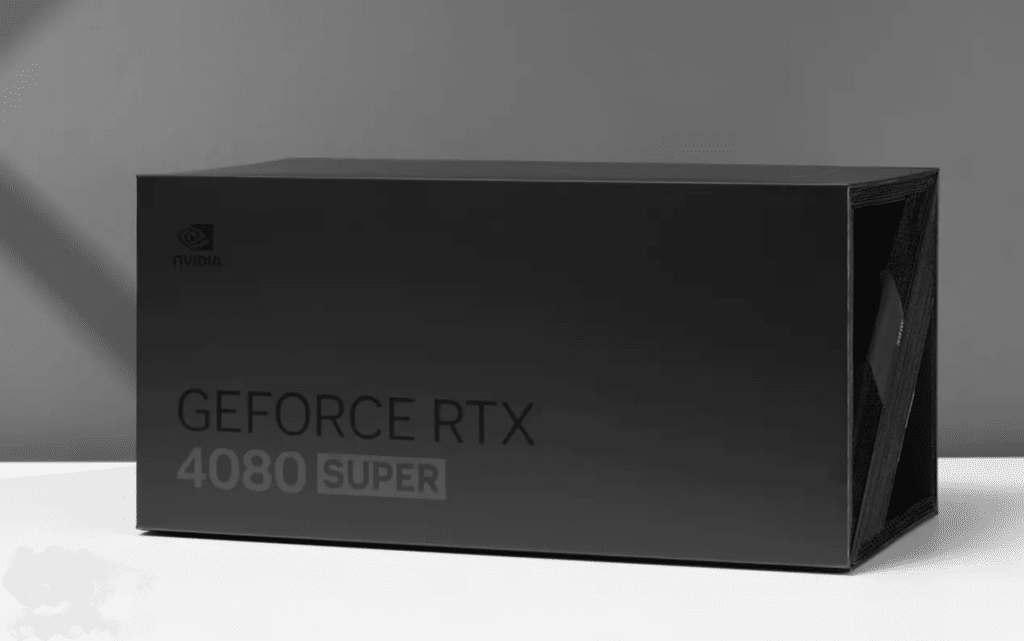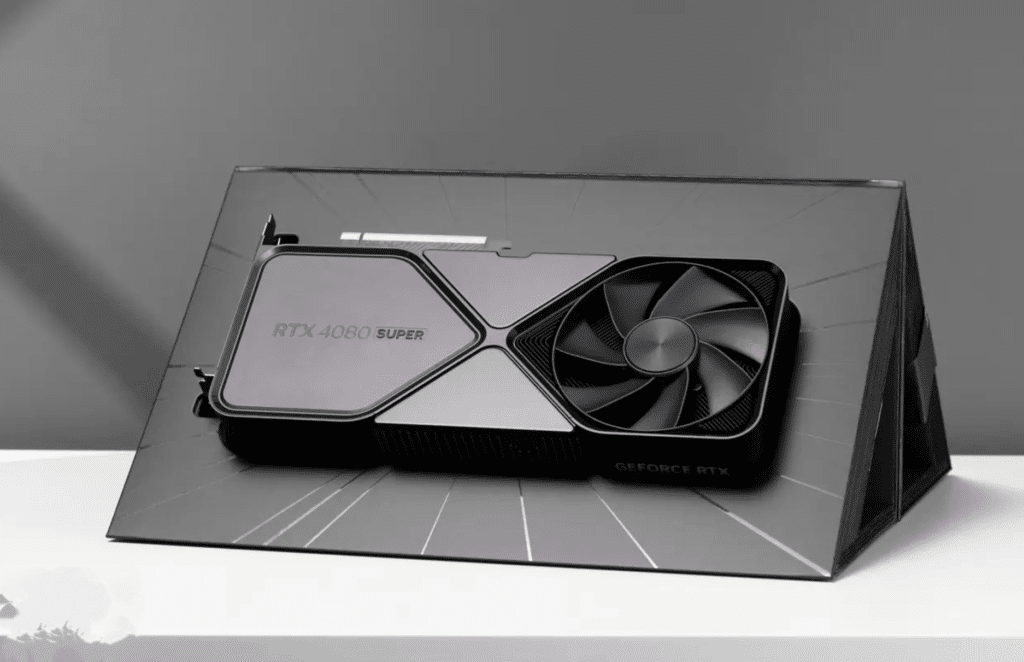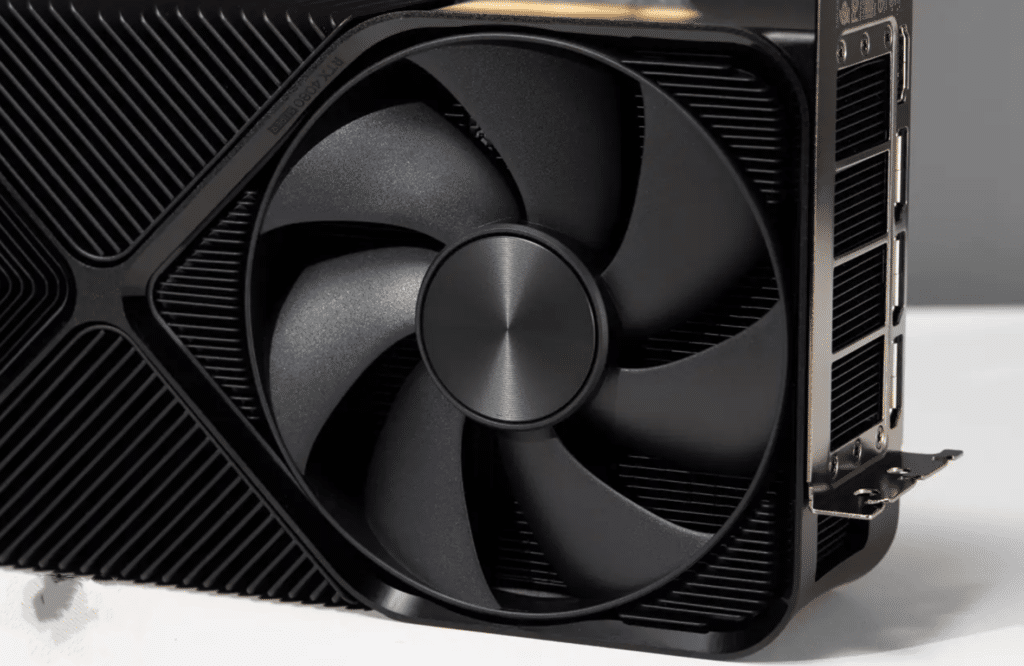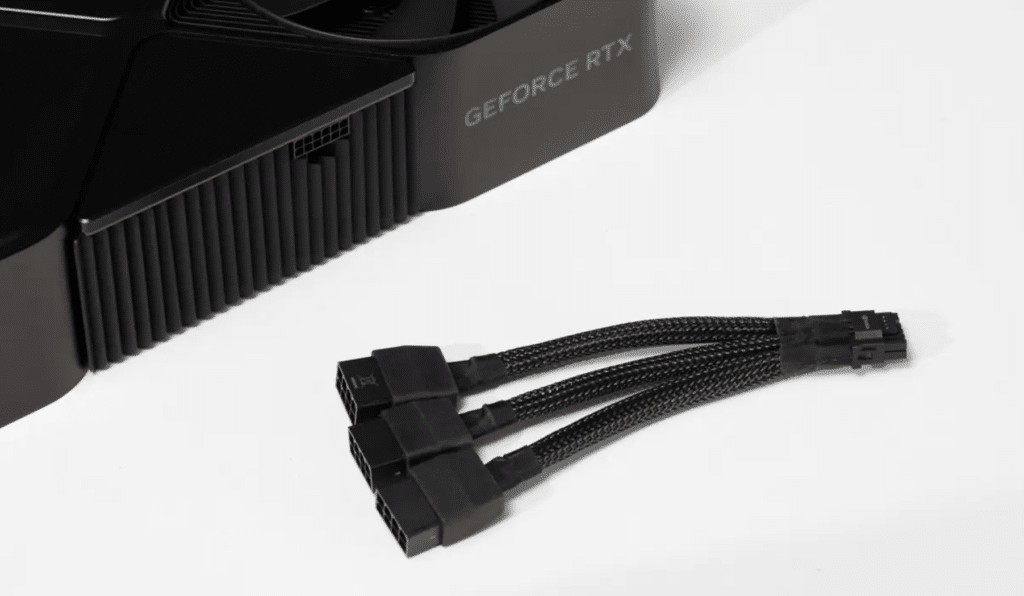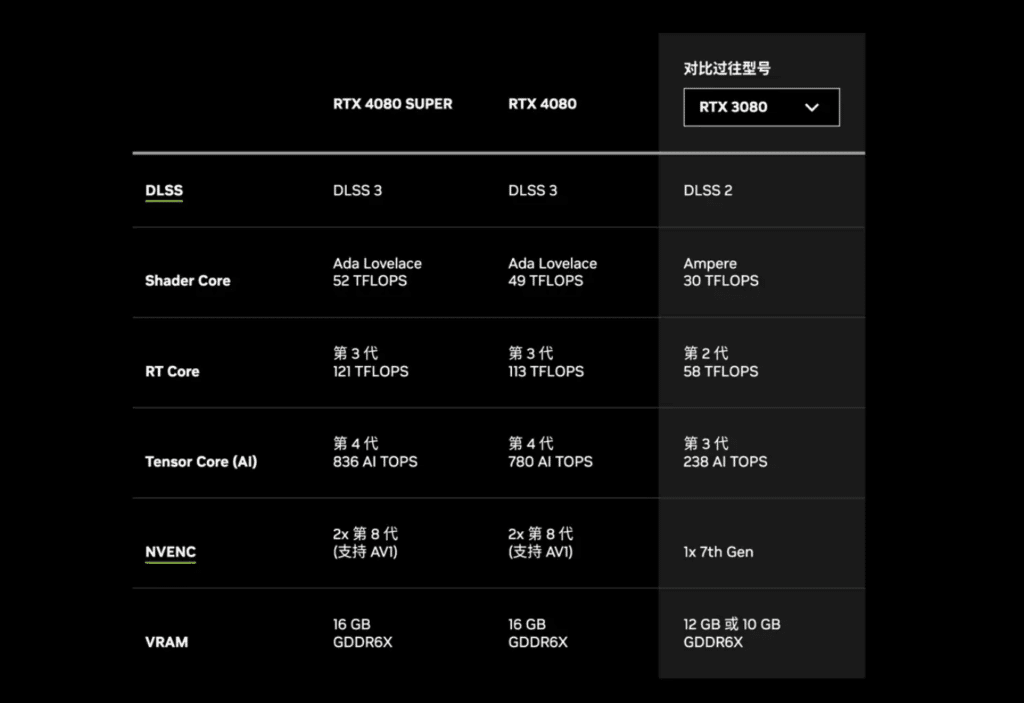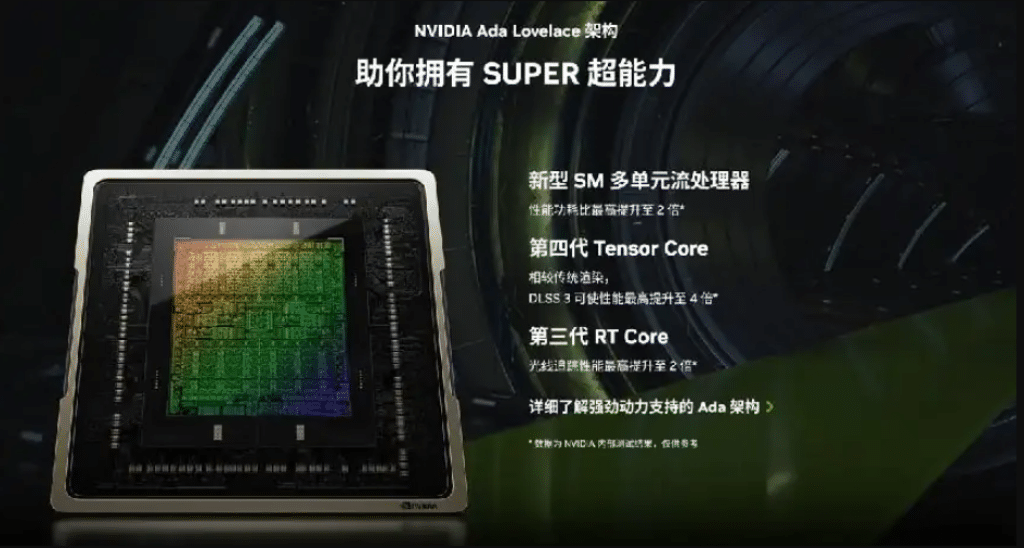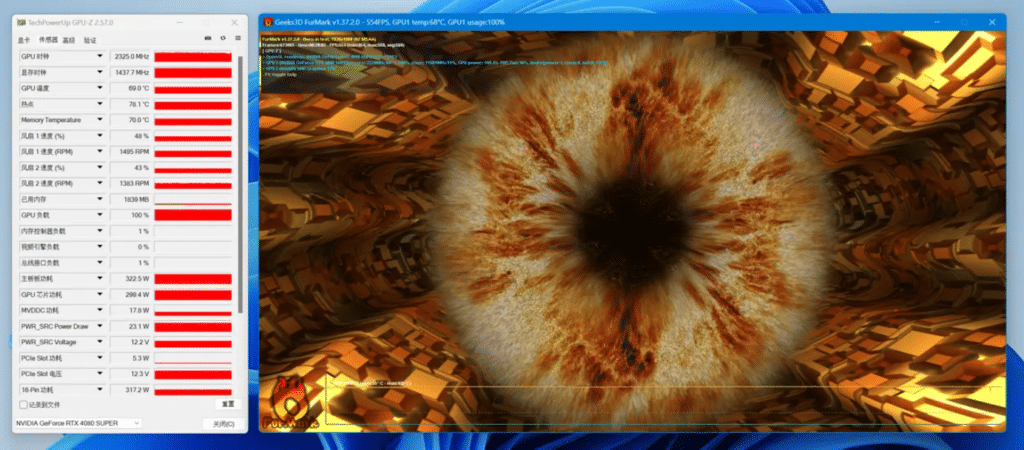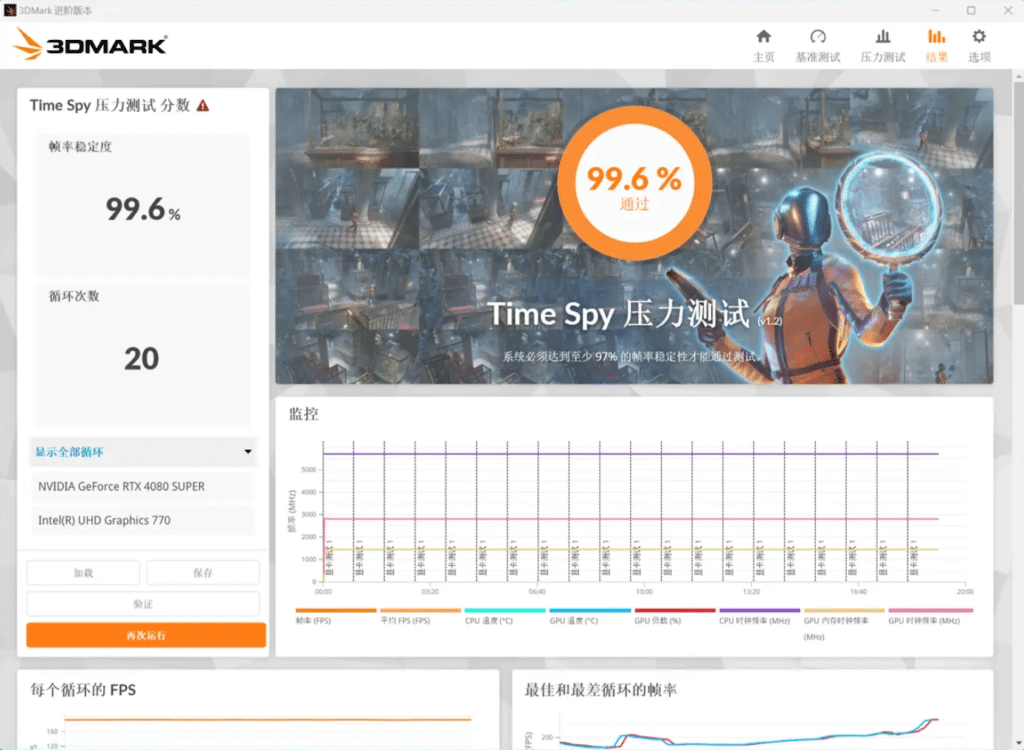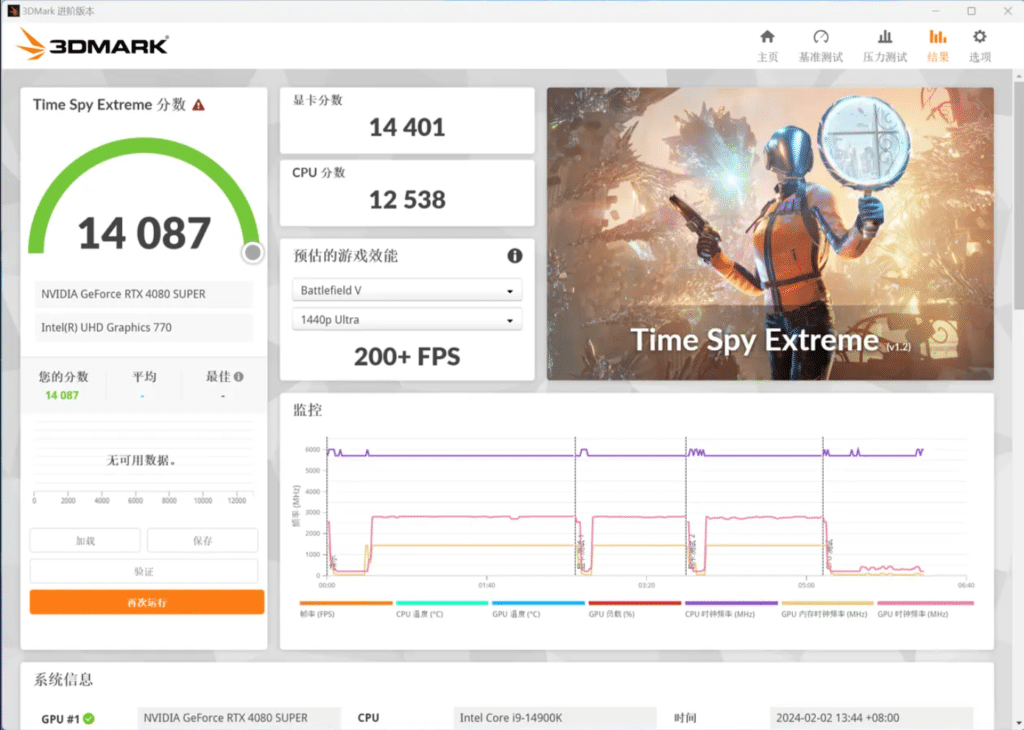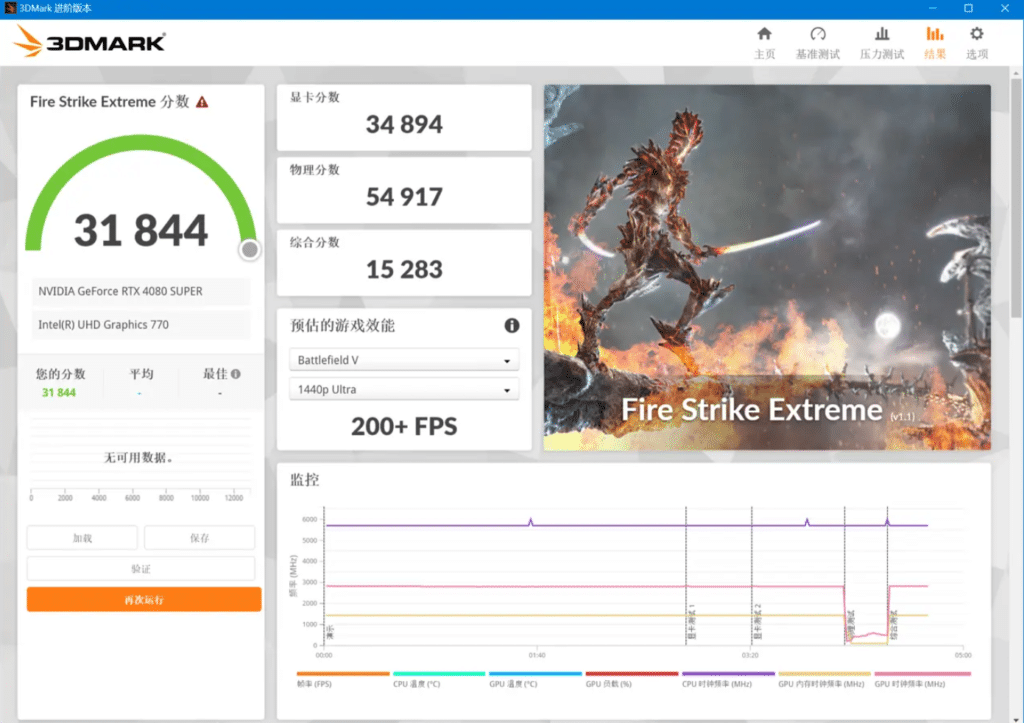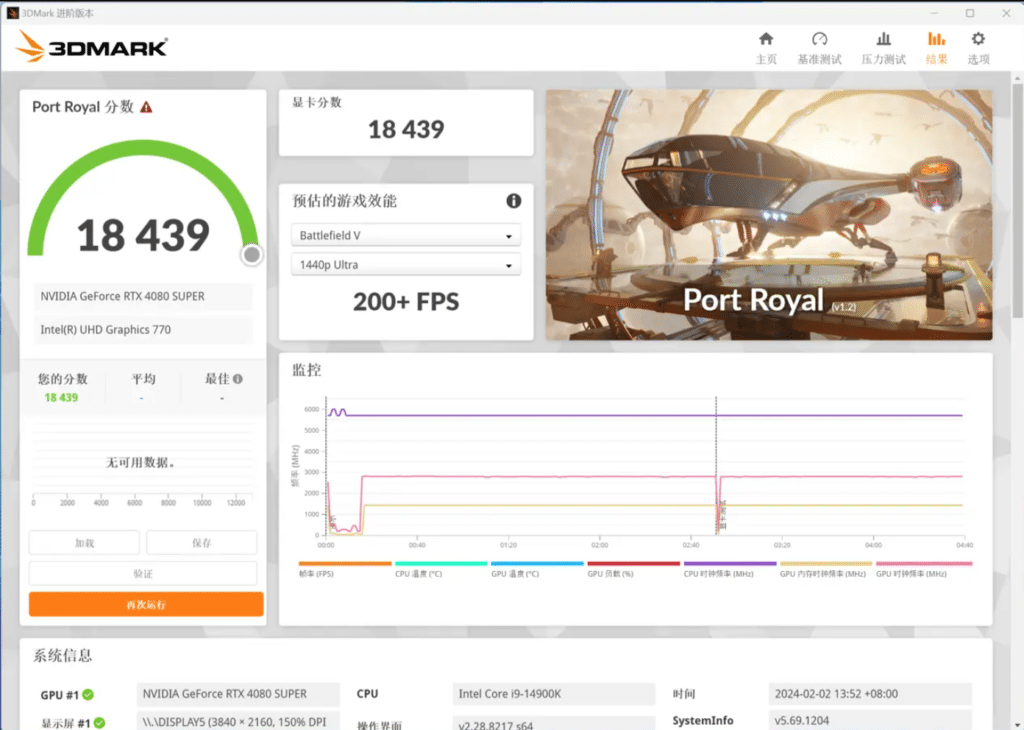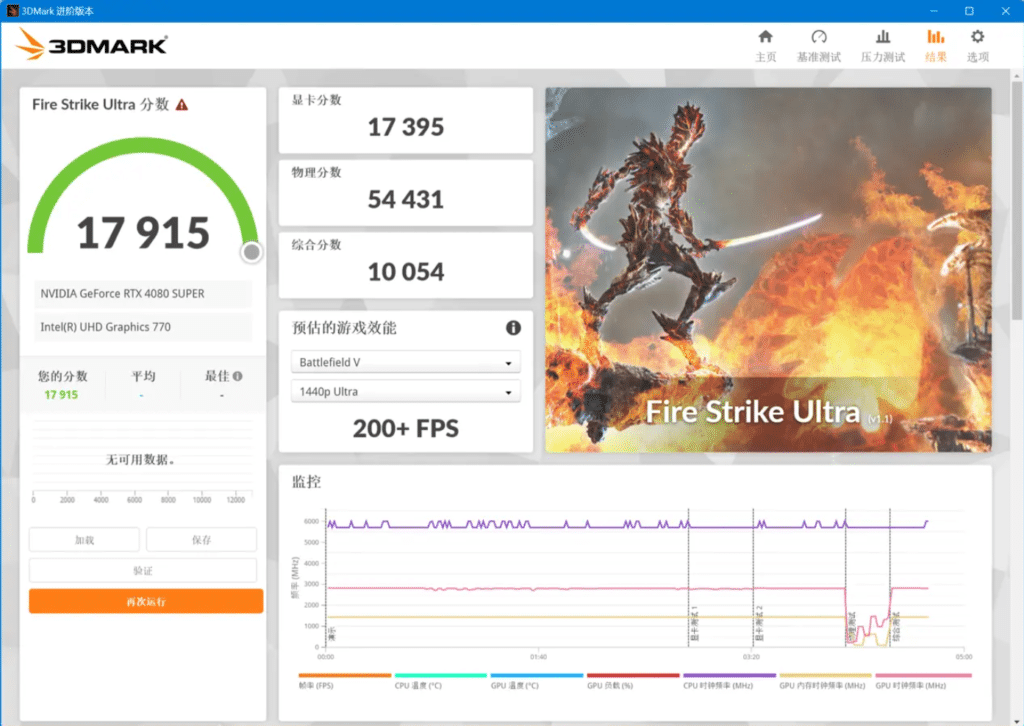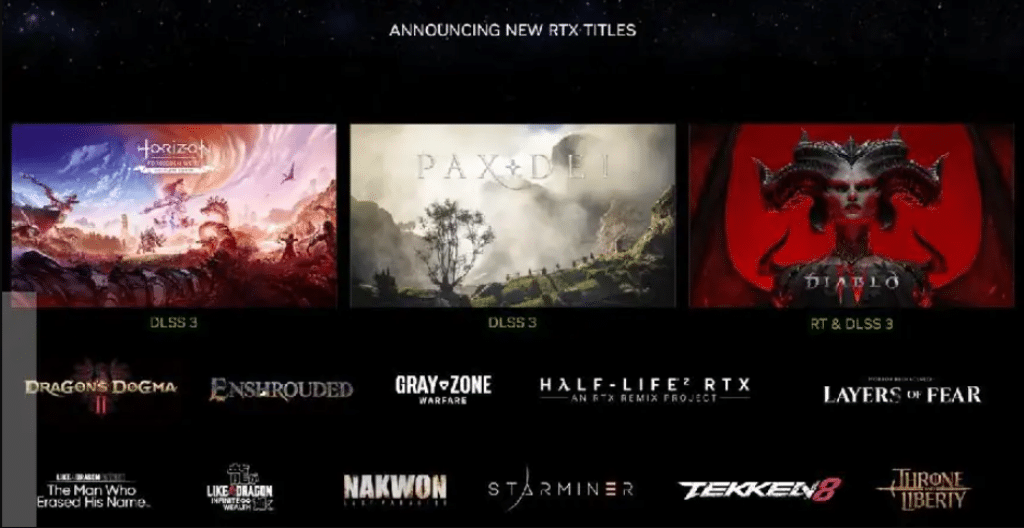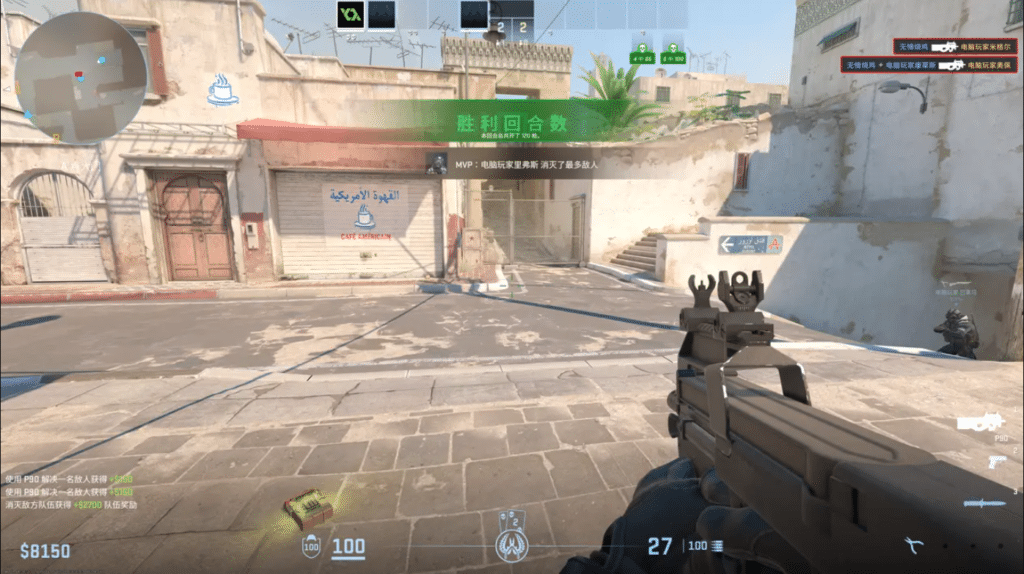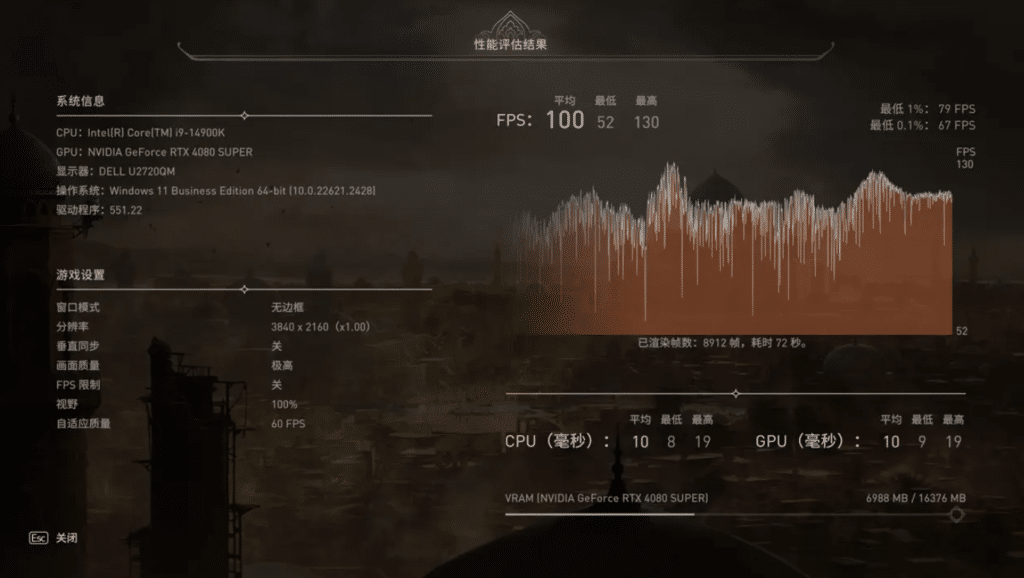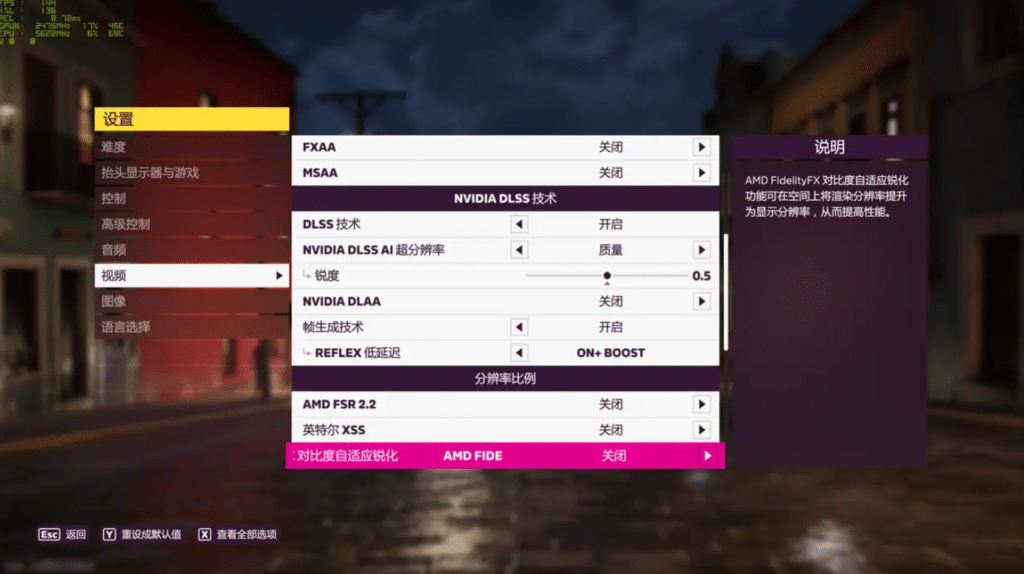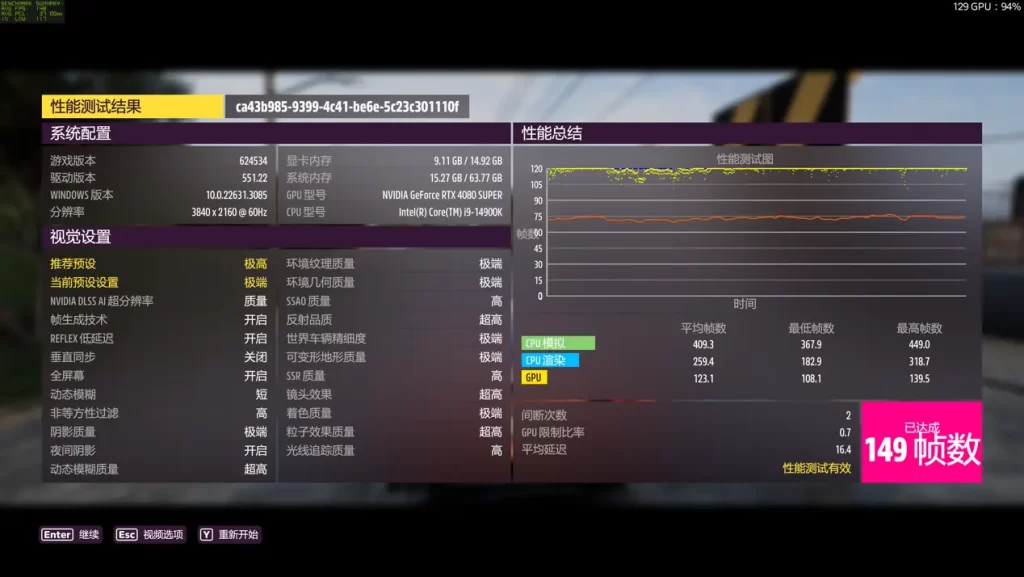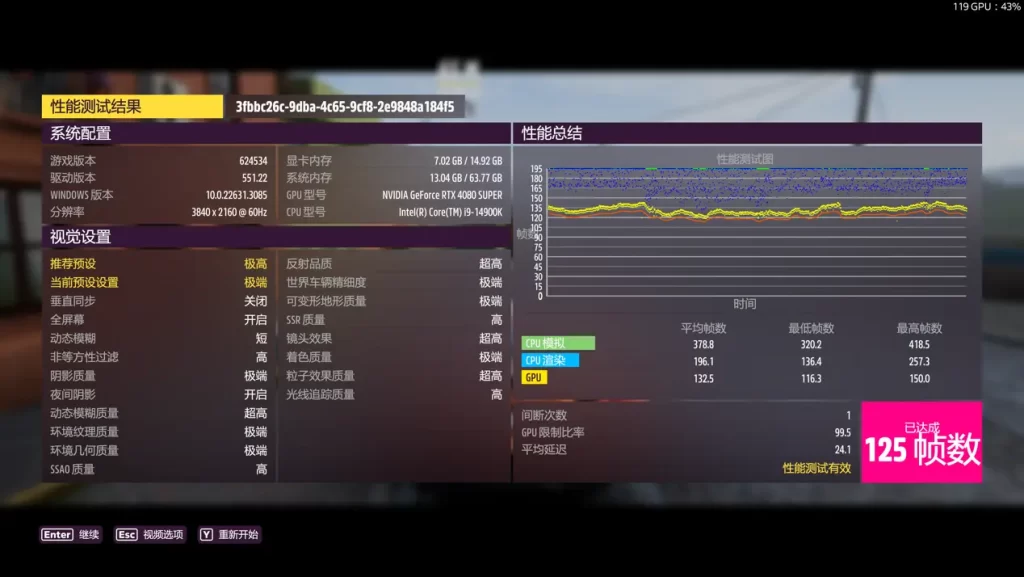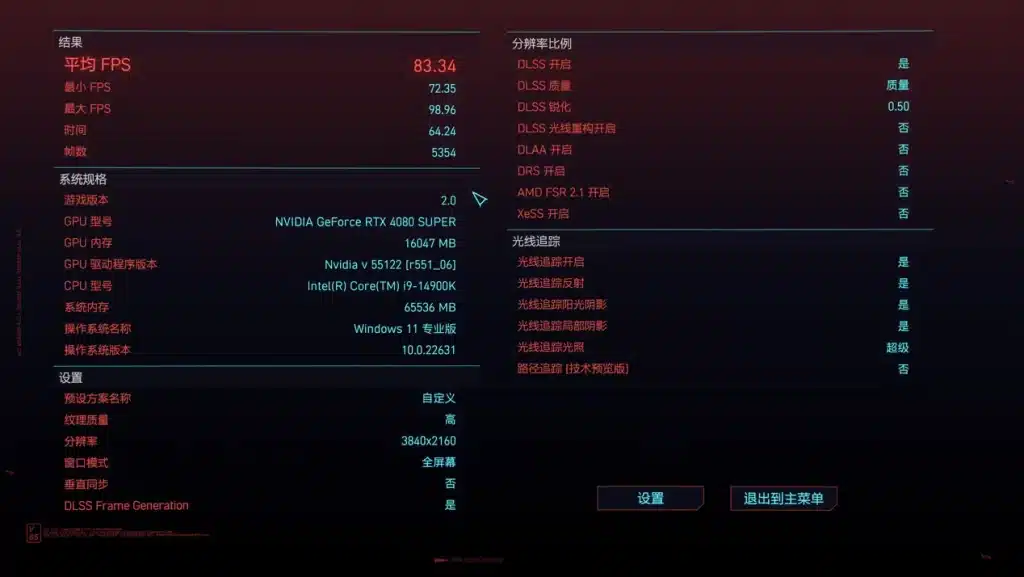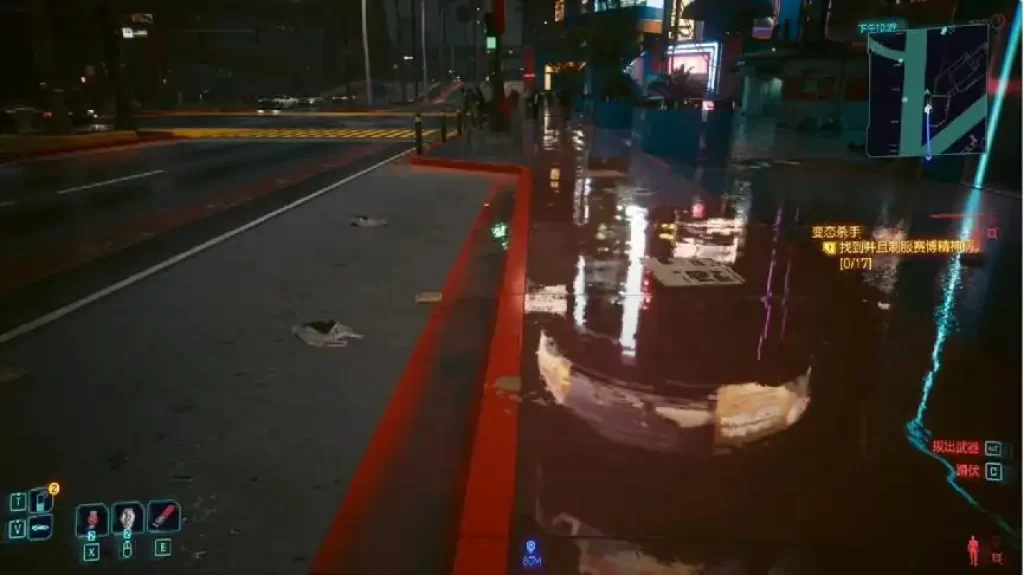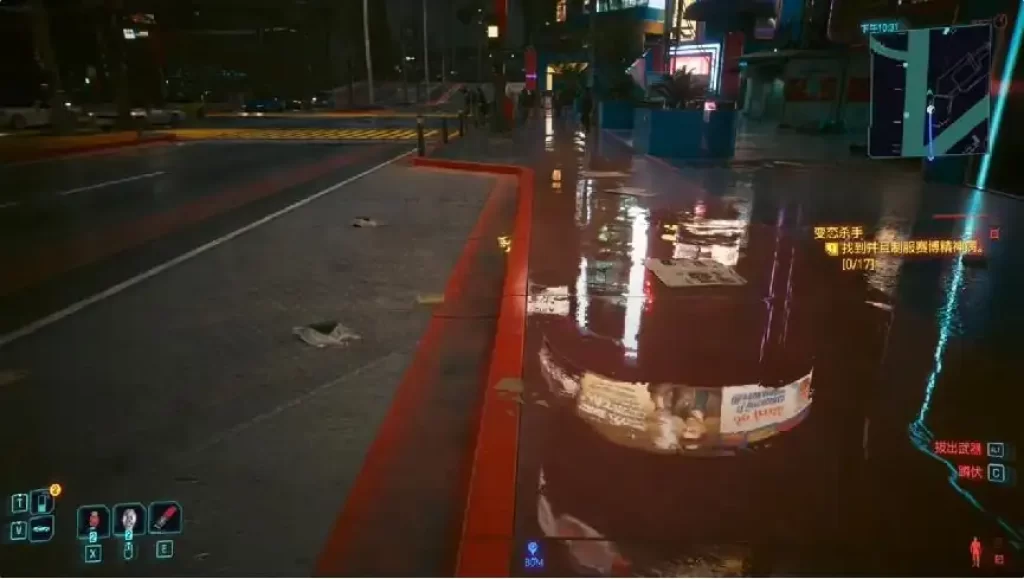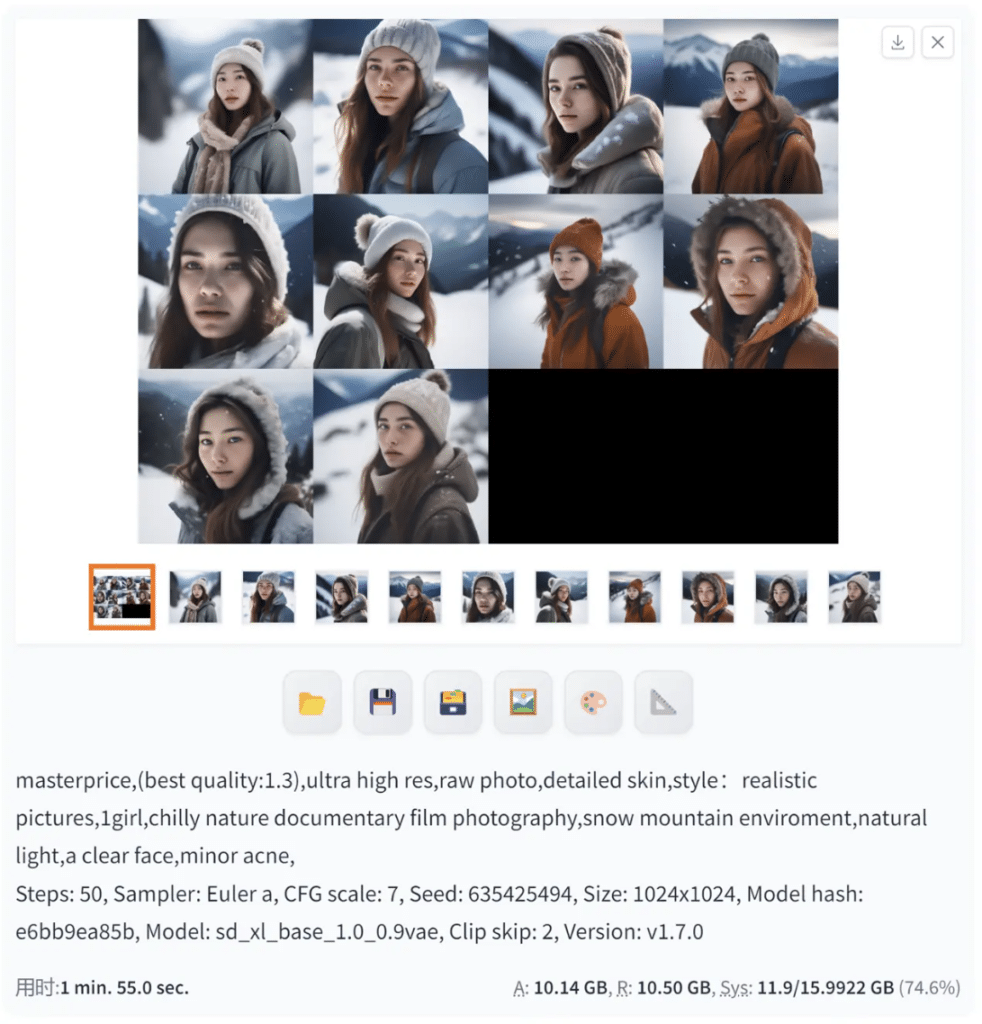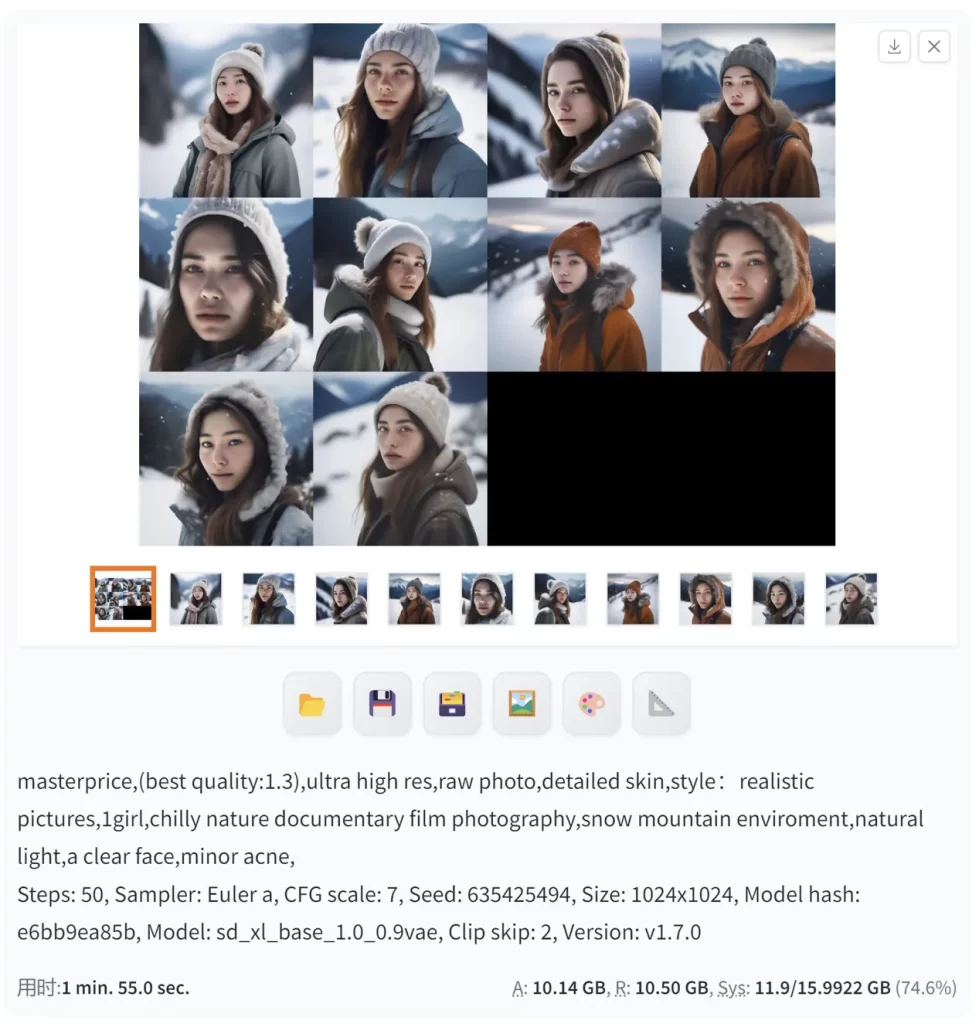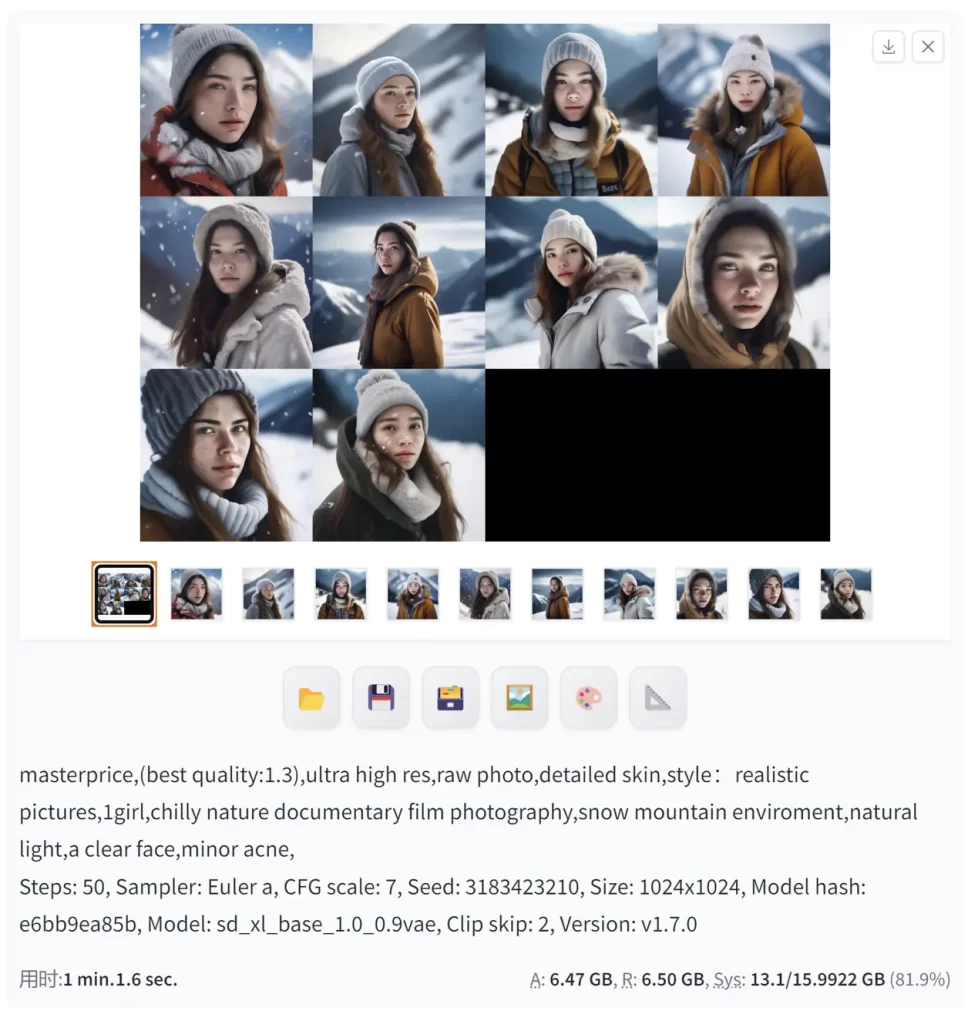The latest addition to the NVIDIA RTX 40 SUPER series graphics card lineup has arrived, emphasizing on delivering a top-notch 4K gaming experience. Priced at 1,499 yuan (about $210) less than its counterpart, the NVIDIA GeForce RTX 4080, priced at 8,099 yuan (about $1137). NVIDIA GeForce RTX 4080 SUPER is a viable option for those looking to upgrade or build a new computer with a reasonable budget and balanced performance across the board.
Now, let’s take a closer look at our test platform before diving into the review
Firstly, a notable change in the appearance of the graphics card is the switch to a sleek black paint finish. This detail stands out as the most significant visual alteration, giving the new NVIDIA GeForce RTX 4080 SUPER a more stylish look.
Opening the box itself is an exciting experience. The packaging is meticulously crafted, presenting the card as a technologically advanced metal “ornament” when placed on the table.
The NVIDIA GeForce RTX 4080 SUPER’s front features an X-shaped design with an oversized fan covering almost half of the card’s surface. On the left side, the RTX 4080 SUPER model text is both incised and engraved, providing a refined look and feel. However, the card has grown to 3.5 slots, increasing both volume and weight. We recommend using a graphics card bracket for installation to ensure stability.
The heat dissipation fins and fan on the right side are finished in black, improving the card’s weight and heat dissipation efficiency. An identical fan on the left side creates a vertical air duct, effectively removing heat from within the graphics card. The sides of the NVIDIA GeForce RTX 4080 SUPER are blackened for a visually cohesive appearance. A subtle concave arc in the middle enhances the overall texture. The power supply interface has a 12+4pin design, ensuring a more stable power supply.
Core Analysis
The NVIDIA GeForce RTX 4080 SUPER, based on the AD103 core, boasts some intimidating core specifications. It packs 10,240 CUDA cores, a 5.2% increase from the RTX 4080’s 9,728 CUDA cores. It houses 52 units, and 121 RT Core TFLOPS, enhancing graphics/game performance. Moreover, with 320 Tensor Cores and 836 AI TOPS, it delivers robust AI computing power and DLSS performance.
Moving to graphics memory, the RTX 4080 SUPER maintains the 16GB GDDR6X, consistent with the RTX 4080. However, the addition of a 64MB L2 cache enables full utilization of gaming performance at 4K resolution. GPU frequency sees a boost, with a base frequency of 2295MHz and an acceleration frequency of 2550MHz, 40MHz and 80MHz higher than the RTX 4080, respectively. In terms of official positioning, it stands out as a high-end graphics card tailored for 4K gaming with potent AI computing capabilities.
The GeForce RTX 4080 SUPER utilizes the latest NVIDIA Ada architecture, crafted on the TSMC 4N NVIDIA custom process. This achieves a performance-power consumption ratio leap of up to 2 times. The streaming multiprocessor throughput exceeds 2x the previous generation, and the fourth-generation Tensor Cores, with a new FP8 engine, deliver Tensor processing performance of up to 1.32 petaflops, enhancing DLSS performance by up to 4 times.
Theoretical performance
Before delving into performance testing, a donut baking machine test evaluates power consumption. After 20 minutes, GPU power consumption remains at about 320W, with core and memory temperatures at 69℃ and 70℃, respectively. This balanced temperature performance ensures the GPU frequency reaches between 2325MHz and 2450MHz, maintaining guaranteed performance release.
A 3D Mark Time Spy stress test is conducted on the GeForce RTX 4080 SUPER under continuous high load. The outcome is impressive, achieving a score of 99.6%, showcasing excellent sustained performance output.
In the 3DMark TimeSpy Extreme DX12 test, the GeForce RTX 4080 SUPER scores 14401 points, a substantial 67.4% increase from the RTX 3080’s 8602 points, surpassing even the previous generation RTX 3090.
Moving on to graphical user interface applications, the 3DMark Fire Strike Extreme DX11 test yields a score of 34894 points for the GeForce RTX 4080 SUPER, marking a 71.2% increase from the RTX 3080’s 20382 points and a 28.8% increase from the previous generation RTX 3090 Ti’s 27074 points.
In the 3DMark Fire Strike Ultra DX11 test, the NVIDIA GeForce RTX 4080 SUPER scores 17,395 points, a 67.8% increase from the RTX 3080’s 10,365 points, surpassing the previous generation RTX 3090 Ti’s 13,855 points.
Concluding with the 3DMark Portal Royal light chasing test, the GeForce RTX 4080 SUPER achieves a score of 18,439 points, a 64.1% increase from the RTX 3080’s 11,231 points, showcasing a significant improvement in the performance of light chasing games.
Gaming Test
Now that we are talking about games, we have to mention that the NVIDIA platform currently has more than 500 games and applications that support RTX technology, and as DLSS 3 technology becomes more mature and popular, the number of games that support DLSS 3 is also constantly rising.
This year, we added 14 new games that support DLSS 3 technology. These include well-known titles like “Dragon’s Dogma 2,” “Horizon Forbidden West,” “Like a Dragon: Infinite Wealth,” and “Half-Life 2 RTX.” Additionally, games like “Alan Wake Ⅱ,” “Cyberpunk 2077: Phantom Liberty,” and “Call of Duty:Modern Warfare 3” now also feature support for DLSS 3 or DLSS 3.5 technology for the first time. Simultaneously, all current mainstream popular online competitive games now incorporate NVIDIA Reflex technology. Whether you’re a low-end player or an e-sports enthusiast, these two technologies significantly enhance the gaming experience.
In the next game test session, we will test 6 games for you, including 2 online competitive games, 2 traditional raster games, and 2 ray tracing games that support DLSS 3/3.5. All games are tested at 4K resolution. , to verify its 4K / 4K ray tracing game performance.
CS2
The first are two online competitive games. In “CS2”, we used the default high image quality option, played a game at 4K resolution, and recorded the average frame number through Frame View. GeForce RTX 4080 SUPER played at 4K resolution. The average number of frames can reach 305 frames.
Additionally, activating the NVIDIA Reflex option in the game settings to On + Enhancement reduces the game’s average delay to only 9ms at 4K resolution, minimizing its impact on players.
Tom Clancy’s Rainbow Six Siege
For the second online competitive game, we chose the popular “Tom Clancy’s Rainbow Six Siege”. The GeForce RTX 4080 SUPER has an average frame rate of 350 frames at 4K resolution and the highest quality, which is fully capable of satisfying high scores. High demand for brushing e-sports.
As for latency, “Rainbow Six: Siege” also supports NVIDIA Reflex technology. When the game is running, select the option with Vukan, and you can find the Reflex on + enhanced option in the game. After turning it on, grab it through Frame, 4K The average delay at the resolution is only 10.2ms, and the delay performance is quite good.
Red Dead Redemption 2
Then there are two traditional raster games. In the classic narrative adventure game “Red Dead Redemption 2”, the highest image quality is selected. The average number of frames at 4K resolution can reach an average of 99 frames, and the RTX 4080 is 95 frames, which is an improvement. 4.2%.
Assassin’s Creed Mirage
We also tested Ubisoft’s latest work “Assassin’s Creed Mirage”. At the highest quality of 4K resolution, running the game’s own performance benchmark test, the average number of frames of the GeForce RTX 4080 SUPER reached 100 frames, and the RTX 4080 The average number of frames is 92 frames, an increase of about 8.6%. The test results clearly show that RTX 4080 SUPER has a relatively limited improvement over RTX 4080 in traditional raster games.
Forza Horizon 5
So how does the GeForce RTX 4080 SUPER perform in light chasing games? Gizcoupon has selected two light-tracing games that support DLSS 3/3.5. One of them is the extremely well-optimized Forza Horizon 5. Select the extreme image quality preset in the game and turn on DLSS 3 + DLSS. 2 quality level, the NVIDIA Reflex option will also be turned on by default. As usual, we select Reflex ON+BOOST and run the performance benchmark test that comes with the game.
Enter the game and select 4K resolution extreme image quality, the average number of frames can reach 149 frames, and the average delay of the game is only 16.4ms. The average number of frames of the RTX 4080 is 132 frames, an increase of about 12.8%.
So what is the performance of NVIDIA GeForce RTX 4080 SUPER if we only enable light tracing without DLSS options and turn off the Reflex low-latency option? It can be seen that in the excellently optimized Horizon 5, even without DLSS, the average frame rate under 4K light tracing still reaches 125 frames. However, without the blessing of Reflex low-latency technology, the average game delay soars to 24.1ms.
Cyberpunk 2077
Finally, there is “Cyberpunk 2077”, which has very high requirements for graphics card performance. This time we tested it three times. For the first time, we selected super ray tracing quality, turned on DLSS 2 quality file + DLSS 3 frame generation, at 4K resolution. Running the built-in benchmark performance test, the average frame rate can reach 83 frames, which is not bad.
The second time we chose ultra-fast ray tracing quality and turned on DLSS 2 quality level + DLSS 3 frame generation + DLSS 3.5 light reconstruction. The GeForce RTX 4080 SUPER achieved an average of 60 frames at 4K resolution, marking it as a successful performance with a bottom line of 4K/60fps.
If you turn off DLSS completely and only enable ray tracing, the game will average only 29 frames under 4K. After all, not all games can have the level of optimization of Horizon 5, and the load of image quality on performance is also different. Through comparison, it is not difficult to find that DLSS technology is definitely the most practical technology for gamers.
The front of the NVIDIA GeForce RTX 4080 SUPER showcases an X-shaped design, with an oversized fan covering nearly half of the card’s surface. On the left side, the RTX 4080 SUPER model text is both incised and engraved, giving it a refined appearance. However, the card has expanded to 3.5 slots, resulting in increased volume and weight. For installation stability, we suggest using a graphics card bracket.
Creative production
As we mentioned earlier, the NVIDIA GeForce RTX 4080 SUPER has an L2 cache of 64MB, a memory bandwidth of up to 23Gbps, and up to 836 AI TOPS cores, which provides a strong guarantee for the creative production and AI performance of the GeForce RTX 4080 SUPER. Users can also install NVIDIA Studio drivers to accelerate more than 110 of the most popular creative applications, such as Optix, DLSS, and Maxine, as well as the full set of NVIDIA Studio creative applications, including NVIDIA Omniverse, Broadcast, Canvas, and RTX Remix.
In modeling and rendering software, GeForce RTX 4080 SUPER’s 10240 CUDA cores can provide hardware acceleration, improving work efficiency. Almost all modeling software will optimize NVIDIA’s GPU, so it can take into account efficiency, stability and compatibility. In V-Ray, use the RTX-accelerated ray tracing function for high-performance final frame rendering. In addition, the GPU equipped with AI noise reduction function can further accelerate interactive rendering and provide a smoother working experience.
Benchmark
Take an actual look at the professional productivity performance of GeForce RTX 4080 SUPER. The first is the benchmark test part of the V-Ray Benchmark modeling software. The GPU CUDA test item scored 3103 points. In the GPU RTX test project, the final score of the GeForce RTX 4080 SUPER graphics card was 4292 points.
In the Benchmark test of another modeling software blender, the three-scenario scores of the GeForce RTX 4080 SUPER graphics card are as shown in the figure. Scores significantly improved to 4574, 2162, and 2264 in the three scenes.
First, examine its performance in video rendering, encoding, and decoding. The GeForce RTX 4080 SUPER features 2 NVENC encoders and backs the latest AV1 video encoding tech, ensuring quicker encoding and enhanced performance for the same video size, delivering high-quality streaming performance. The Domestic Cutting Professional Edition has already incorporated accelerated support for the NVIDIA AV1 video encoder. We conducted tests by importing a 2-minute and 30-second 4K video into the Cutting Professional Edition, exporting it using both H.264 encoding and AV1 encoding.
When exporting the 4K / 60 frame specifications, AV1 encoding produces a 609MB video size, whereas H.264 encoding results in an 800MB video size. Comparing the file sizes of AV1 and H.264 encoded videos reveals the difference.
Graphical user interface, application
And in terms of image quality, by intercepting the picture details of the two videos and observing them, there is basically no difference between the two encoding methods. It is small and high-definition. AV1 is bound to become the new favorite among encoding formats.
There is also RTX video super-resolution technology, which can upscale online 1080P videos to 4K resolution through GPU AI calculations, achieving the effect of improving clarity through algorithms. We only need to find the video in the NVIDIA control panel – adjust the video image settings, and then we can customize the adjustment. There are 4 levels of super resolution. Adjusted the resolution to 480P, and then successively increased the super score level to conduct a screenshot test. We can see that the characters become clearer at levels 1-4.
Stable Diffusion
Finally, we briefly tested the performance of this card in AIGC through Stable Diffusion. For the model, we used sd_xl_base_1.0_0.9vae.safetensors based on the SDXL open source model , and drew 21 images of girls on snowy mountains in the form of Vincentian diagrams. The image resolution is 1024*1024, the sampling method is Euler a, the number of iteration steps is 50, the total number of batches is 10, and it finally takes 1 minute and 55 seconds to complete.
The second time we turned on the TensorRT Engines optimization engine and ran it again with other settings unchanged. This time it only took 1 minute and 01 seconds, saving nearly half.
